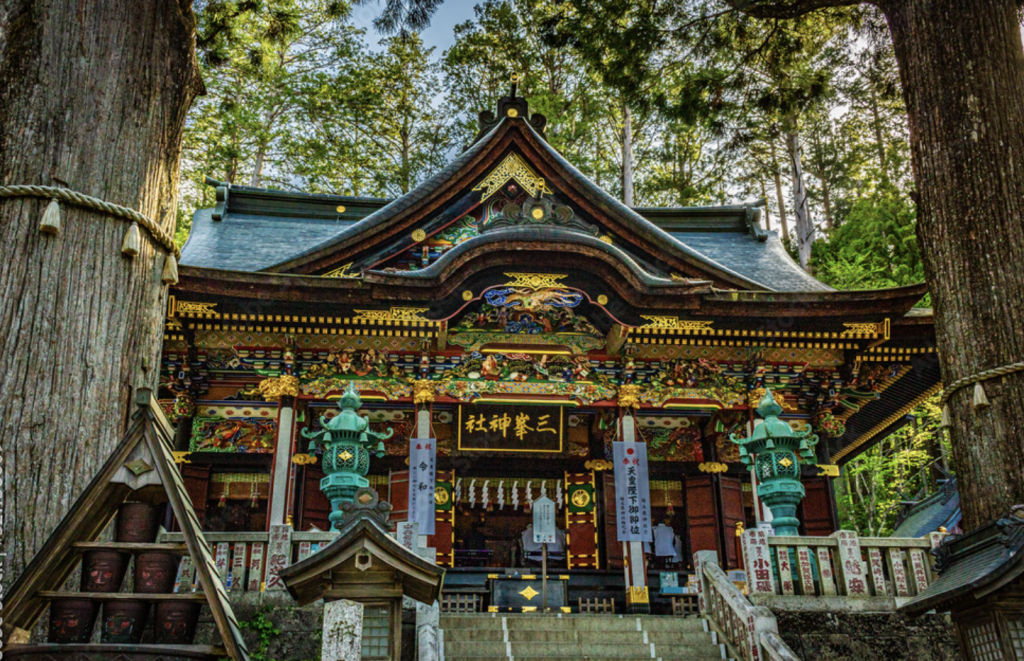Saitama Prefecture Apartment Rental Guide for Foreigners
Introduction: Why Saitama for Foreign Residents?
Saitama Prefecture, located just north of Tokyo, has become increasingly popular among foreign residents seeking affordable housing close to the capital. With lower rents than Tokyo and more spacious apartments, Saitama offers an attractive balance for families, students, and professionals alike.
Many foreigners are drawn to Saitama for its suburban environment, with quieter neighborhoods, parks, rivers, and access to natural landscapes. Despite being outside Tokyo, Saitama’s excellent train and highway networks make commuting to central Tokyo straightforward, taking anywhere from 20 to 60 minutes depending on the location.
The prefecture also hosts a growing number of multicultural communities. Indians, Filipinos, Vietnamese, and Chinese residents have settled in cities such as Saitama City, Kawaguchi, and Koshigaya. International supermarkets, spice shops, and restaurants catering to halal and vegetarian diets make daily life easier.
For families, Saitama provides more room for children to grow, safer streets, and schools offering Japanese language support or international curricula. This combination of convenience, affordability, and livability makes Saitama a popular choice for foreigners.
Chapter 1: Living Environment in Saitama
Suburban Comfort and Family-Friendly Neighborhoods
Cities like Saitama City, Kawaguchi, and Koshigaya offer suburban living with spacious apartments, larger kitchens, and balconies that are rare in central Tokyo. Parks, playgrounds, and riverside areas provide recreational space for families.
Natural attractions, such as Omiya Park and Saitama Stadium 2002, as well as rivers like the Arakawa, offer plenty of outdoor activities. Residents enjoy seasonal cherry blossoms, riverside walking paths, and weekend markets.
International Grocery Stores and Dining Options
Foreign residents have access to specialty grocery stores, including Indian spice shops, Filipino markets, and Vietnamese supermarkets. Many restaurants cater to vegetarian, vegan, and halal diets, while authentic Asian cuisine is easily available near major stations.
Education Options: International and Japanese Schools
Saitama offers several international schools and programs for children of foreign residents:
- Saitama International School – English-based curriculum
- Urawa International School – bilingual programs
- Local public schools with English support programs for foreign students
Families often choose between Japanese schools for cultural integration and international schools for continuity in English-language education.
Chapter 2: Rental Market and Rent Price Ranges
Typical Apartment Types and Monthly Costs
- 1R (Studio): ¥35,000–¥55,000
- 1LDK (One bedroom + living/dining/kitchen): ¥55,000–¥85,000
- 2LDK (Two bedrooms + living/dining/kitchen): ¥75,000–¥120,000
- Family-sized apartments (3LDK+): ¥110,000–¥180,000
Compared to Tokyo, residents can enjoy larger apartments at a more affordable price. Parking spaces are common, especially in suburban towns, making Saitama suitable for families with cars.
New vs. Older Apartments
- New Buildings: Modern appliances, elevators, security systems
- Older Buildings: Cheaper rent but may lack modern facilities
Foreign families generally prefer 2LDK or larger apartments with parking, especially in Kawaguchi, Saitama City, and Koshigaya.
Deposits, Key Money, and Renewal Fees
- Deposit (Shikikin): 1–2 months’ rent
- Key Money (Reikin): Usually 1 month, non-refundable
- Renewal Fee: Typically required every 2 years
Fees in Saitama are generally lower than in Tokyo, which makes relocation easier and more budget-friendly.
Chapter 3: Commuting & Transportation Access
Access to Tokyo
- Saitama City: 25–35 minutes to Tokyo Station via JR Keihin-Tohoku Line
- Kawaguchi: 20–25 minutes via JR Keihin-Tohoku Line
- Koshigaya: 30–45 minutes via Tobu Skytree Line
Commuting is convenient, though peak hours can be crowded.
Local Transportation
Saitama is well-served by JR lines, private railways such as Tobu and Seibu, and bus networks. While trains are frequent, suburban buses may be less frequent, so residents often rely on bicycles or cars for short trips.
Airport Access
- Narita Airport: 50–70 minutes from northern Saitama via JR and Keisei lines
- Haneda Airport: 60–80 minutes using a combination of JR and Tokyo Metro
Proximity to airports is advantageous for foreign residents who travel frequently.
Saitama Prefecture Apartment Rental Guide for Foreigners
Chapter 4: Foreign Communities and Culture in Saitama
Indian Community
Kawaguchi, Saitama City, and Urawa host a significant Indian population. Families often settle here due to spacious apartments, international grocery stores, and proximity to schools with English support. Local temples and cultural centers provide opportunities to celebrate festivals like Diwali and participate in community events.
Filipino Community
Many Filipinos reside in Saitama City and surrounding towns. Employment is often related to healthcare, aviation, and hospitality. Churches and community centers play an essential role in maintaining cultural ties, hosting events such as Simbang Gabi and Filipino festivals.
Vietnamese and Chinese Residents
Universities and vocational schools attract Vietnamese and Chinese students in Koshigaya, Saitama City, and Kawaguchi. Language schools are also available for students and professionals improving Japanese skills. Cultural centers offer social activities, networking, and community engagement.
Cultural Events and Facilities
- Temples and Churches: Religious gatherings and social activities
- Community Centers: Language classes, cultural workshops, social events
- Festivals: Diwali, Lunar New Year, Filipino cultural events, and local Japanese celebrations
Chapter 5: Saving Money & Daily Living Costs
Supermarkets and Shopping
- Japanese Chains: Aeon, Ito-Yokado, SEIYU – reliable and affordable
- International Stores: Indian, Filipino, Vietnamese markets – essential for spices and specialty ingredients
Furniture and Household Items
- Second-hand Shops: Hard-off, recycle shops, flea markets
- 100-yen Shops: Affordable daily necessities
Monthly Budget Example for a Family
- Rent (2LDK): ¥90,000–¥120,000
- Utilities (electricity, gas, water): ¥15,000–¥25,000
- Food: ¥35,000–¥55,000
- Transportation: ¥10,000–¥20,000
- Miscellaneous: ¥10,000–¥15,000
Tips to Reduce Costs
- Buy seasonal produce from local markets
- Use IC cards for discounted train/bus fares
- Combine shopping trips to minimize transportation expenses
Chapter 6: Raising a Family in Saitama
Family-Friendly Environment
- Spacious apartments and houses allow comfortable living
- Parks, playgrounds, and riverwalks provide outdoor spaces for children
- Safe neighborhoods make Saitama ideal for families
Education Options
- International Schools: Saitama International School, Urawa International School
- Local Schools: Public kindergartens and elementary schools with English support
- After-School Programs: Japanese language support, tutoring, and extracurricular activities
Japanese Language Learning Challenges
- Children may face difficulty integrating fully without additional language support
- Many families combine local schooling with weekend Japanese classes or private tutoring
Chapter 7: Saitama vs Other Areas (Tokyo, Chiba, Kanagawa)
Rent and Apartment Size
- Saitama provides larger apartments at lower prices than Tokyo
- Tokyo is more expensive but closer to employment opportunities
- Chiba and Kanagawa offer mid-range pricing depending on location
Community Size and Diversity
- Saitama’s suburban towns are ideal for families needing space
- Tokyo has a more diverse international community but limited apartment sizes
- Chiba/Kanagawa attract students and young professionals seeking proximity to Tokyo
Commuting Convenience
- Saitama: 20–60 minutes to central Tokyo depending on the area
- Tokyo: Walking distance to work in central areas but higher rent
- Chiba/Kanagawa: Good commuting options, moderate rent
Final Chapter: Summary – Saitama as a “Second Home” for Foreigners
Saitama Prefecture offers a unique combination of affordability, accessibility, and quality of life for foreign residents. Its proximity to Tokyo, along with convenient transportation and spacious housing options, makes it ideal for families, students, and professionals.
Multicultural communities enhance life in Saitama, providing ethnic grocery stores, restaurants, temples, churches, and cultural events. Families can find apartments that meet their needs while maintaining a comfortable lifestyle at reasonable costs.
For foreigners looking for a balance between Japan’s bustling capital and a relaxed suburban environment, Saitama offers a true “second home,” supporting both professional life and family well-being.

